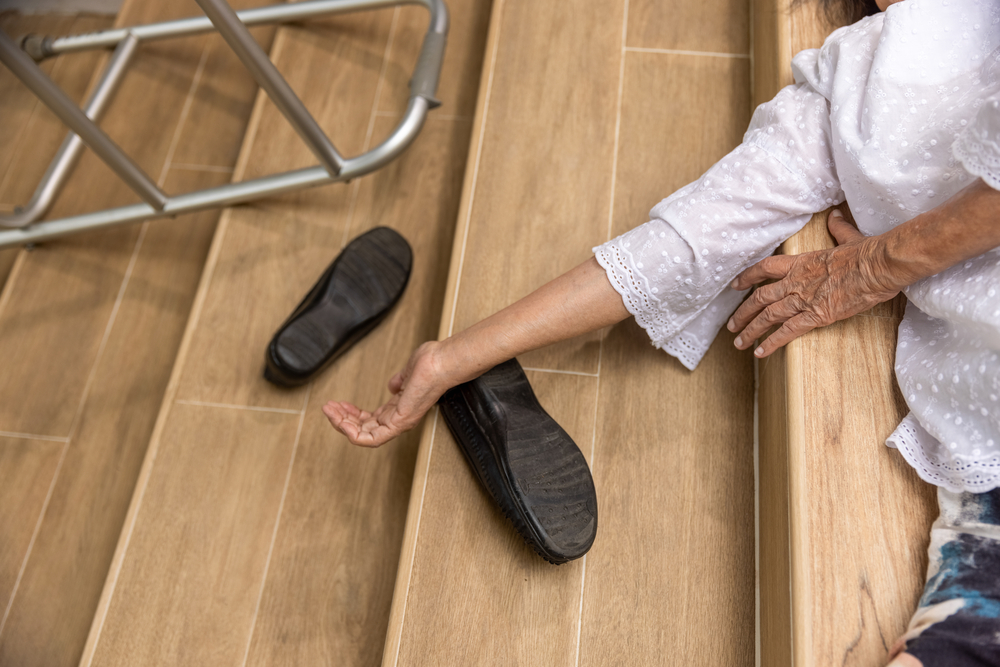As the global population ages, the issue of falls in older adults has become a growing concern. Falls are not just accidents but often a result of various factors that can have serious consequences for the health and well-being of older individuals.[1] Understanding the causes and prevention of falls is crucial to ensuring a better quality of life for our elderly population.
The Prevalence of Falls
Falls are a common occurrence among older adults. According to the World Health Organization (WHO), an estimated 28-35% of people aged 65 and older fall each year.[2] The consequences of falls can be severe, leading to injuries, hospitalization, and a loss of independence. Understanding the factors contributing to falls is essential in developing effective preventive measures.
Contributing Factors
Muscle Weakness: Age-related muscle loss, known as sarcopenia[3], can lead to decreased strength and balance, making older adults more susceptible to falls.
Gait and Balance Issues: Changes in gait and balance are common in aging, making it harder to navigate uneven surfaces or obstacles.
Medications: Some medications can cause dizziness, drowsiness, or other side effects that increase the risk of falling.
Chronic Conditions: Chronic diseases like diabetes, arthritis, and cardiovascular problems can impact mobility and increase the likelihood of falls.
Environmental Hazards: Tripping hazards, poor lighting, and slippery surfaces at home can pose risks.
Vision and Hearing Impairments: Sensory impairments can affect an individual’s awareness of their surroundings.
Consequences of Falls
Falls can have serious repercussions for older adults, including:
Injuries: Fractures, sprains, and head injuries are common consequences of falls.[4]
Loss of Independence: Severe falls can lead to a loss of mobility and independence.
Psychological Impact: Fear of falling can affect an individual’s confidence and mental well-being.
Financial Costs: Falls result in substantial healthcare costs for both individuals and healthcare systems.
Fall Prevention Strategies
Preventing falls in older adults[5] is a multifaceted approach:
Exercise: Encouraging regular physical activity, including strength and balance exercises, can help improve muscle strength and stability.
Medication Review: Regularly reviewing and adjusting medications to minimize side effects can reduce fall risks.
Home Safety: Modifying the home environment to eliminate hazards like loose rugs and installing grab bars can make a significant difference.
Regular Health Checkups: Routine medical checkups can detect and address health issues that contribute to falls.
Vision and Hearing Care: Regular eye and ear checkups can address sensory impairments.
Fall Detection and Response Devices: Technology can assist in alerting caregivers in case of a fall.
Education: Raising awareness among older adults and their families about the risks and prevention of falls is crucial.
The Role of Healthcare Professionals
As clinicians, we play a vital role in fall prevention. We can conduct fall risk assessments, provide education, and work with older adults to create individualized prevention plans. Early identification of risk factors and tailored interventions can significantly reduce the likelihood of falls.
In conclusion, falls in older adults are a complex issue with various contributing factors. However, with a combination of awareness, lifestyle modifications, and healthcare interventions, the risk of falls can be minimized. It is essential to recognize that preventing falls not only improves the quality of life for older adults but also reduces the burden on healthcare systems, making it a priority for individuals, families, and healthcare professionals alike.
[1] Moreland BL, Kakara R, Haddad YK, Shakya I, Bergen G. A Descriptive Analysis of Location of Older Adult Falls That Resulted in Emergency Department Visits in the United States, 2015. Am J Lifestyle Med. 2020 Aug 7;15(6):590-597. doi: 10.1177/1559827620942187. PMID: 34916877; PMCID: PMC8669898.
[2] “Who Global Report on Falls Prevention in Older Age.” World Health Organization, World Health Organization, www.who.int/publications/i/item/9789241563536. Accessed 18 Mar. 2024.
[3] Walston, Jeremy D. “Sarcopenia in older adults.” Current opinion in rheumatology vol. 24,6 (2012): 623-7. doi:10.1097/BOR.0b013e328358d59b
[4] “Falls and Fractures in Older Adults: Causes and Prevention.” National Institute on Aging, U.S. Department of Health and Human Services, www.nia.nih.gov/health/falls-and-falls-prevention/falls-and-fractures-older-adults-causes-and-prevention. Accessed 18 Mar. 2024.
[5] Appeadu MK, Bordoni B. Falls and Fall Prevention in Older Adults. [Updated 2023 Jun 4]. In: StatPearls [Internet]. Treasure Island (FL): StatPearls Publishing; 2024 Jan-. Available from: https://www.ncbi.nlm.nih.gov/books/NBK560761/

